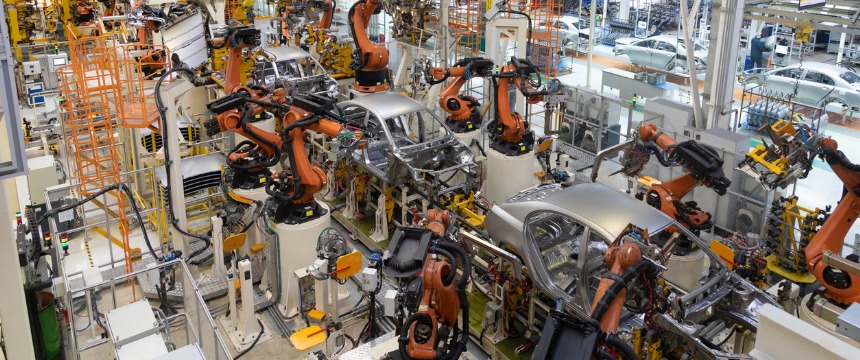Continued Disruption in the Global Supply Chain – and Strained Balance Sheets – Threaten An Already Challenged Automotive Supply Industry

A global pandemic. A worldwide shortage of microchips. Vaccine mandates and testing requirements. Labor shortages and increased salary costs for employees who do show up to work. Not to mention the hundreds of containers piling up in the ports on both coasts, without enough truck drivers to transport the goods that make it outside of the port. What is next?
More than 18 months after the COVID-19 pandemic began, automotive suppliers continue to face significant supply chain disruptions, lower volumes, increased costs and increasingly for some, an uncertain future. Moody’s Analytics recently predicted that these issues will continue to get worse before they get better. IMF recently downgraded its forecast for 2021 US Growth, and, as is often the case, these issues are magnified in the automotive industry. IHS Markit recently further reduced its global light vehicle production forecasts down to 75.8 million units in 2021, and 82.6 million units in 2022 – a downward adjustment of 6.2% and 9.3%, respectively – due to increased pessimism regarding the situation in Malaysia, which accounts for 13% of the global supply of semiconductors.
In addition to challenges and costs that suppliers face in managing their own supply chain, suppliers are facing unpredictable rolling shutdowns of production by their OEM customers. OEMs around the world have imposed intermittent plant closures as they juggle their supply of parts to focus on their most profitable vehicles. For most OEMs, it has been many months since they (and consequently their suppliers) have been able to run full production. Although there are glimmers of hope that these shutdowns may finally be starting to ease, suppliers should expect to see periodic shutdowns continue well into 2022.
As a result, many suppliers are facing customer demands to be on standby in order to meet releases and forecasts for a certain future, only to see their OEM cancel or reduce releases at the last minute. This can leave suppliers holding significant inventory and materials without payments from their customers to provide the cash flow needed to pay their own costs, let alone to eek out a profit. Suppliers who used to manage the financial risk of purchasing raw material inventory to cover future production are in many cases either unable, or unwilling, to continue to do so. The shutdowns also exacerbate an already challenging labor issue, as suppliers are forced to furlough their work force and risk those employees not returning when production finally resumes.
All of this is creating a perfect storm of issues for suppliers. Last year, the balance sheets of many automotive suppliers were propped up with PPP loans and other government stimulus programs. Many lenders also extended forbearance to automotive suppliers who defaulted on their loan covenants, a practice that continues into this quarter. But that forgiveness will not last forever, and many expect that banks will soon be required to report troubled debt restructurings (known as TDRs), which will force a reckoning for financially troubled suppliers. In turn, the customers of those financially troubled suppliers may be called to provide financial accommodations and support in order to continue to receive goods from the troubled supplier.
For a global supply chain that depends on each tier timely delivering goods, many are forecasting significant distress in 2022. Chapter 11 protection can be an expensive and uncertain proposition for almost all stakeholders. Instead, some automotive suppliers seek support from their OEM customer to help “share the pain” imposed by all of these extraordinary events and intermittent shutdowns. In more serious cases, out-of-court restructurings, where customers provide financial and sometimes operational support to a troubled automotive supplier, will likely be predominant. Avoiding a Chapter 11 filing permits a troubled supplier, their customers, and lender the opportunity to work together to continue supply and either restructure the supplier’s balance sheet with new capital, sell to the highest bidder (oftentimes to a customer), or work through an orderly liquidation of the supplier’s assets while customers resource with another supplier. In these workouts, it is critically important that members of purchasing, engineering, finance/treasury, and legal work together to achieve the best outcome for their stakeholder. As well, out-of-court restructurings present opportunities to deploy capital and expand vertical integration through targeted acquisitions of troubled suppliers. The balance sheet honeymoon for many suppliers may be ending, but may also create new opportunities for others.

